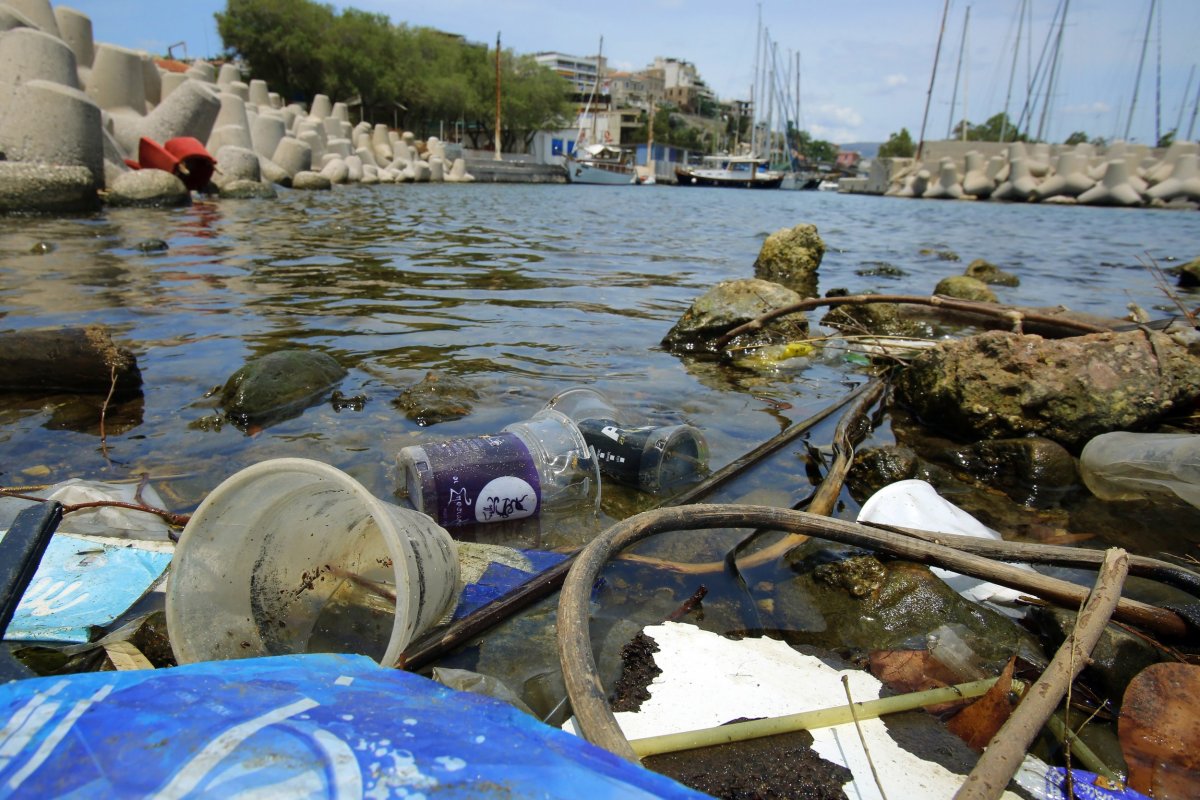Mosquito larvae develop in water that's often polluted with plastics—and they could bring that plastic into adulthood.
Researchers from the University of Reading studied if microplastics in water end up leaving with mosquitoes when they fly away. Published in Biology Letters on Wednesday, the study showed that pollution in water may lead to pollution in areas that are uncontaminated.
"We were expecting them to eat plastic," Amanda Callaghan, a professor at the University of Reading and author on the study told Newsweek. Mosquito larvae can't distinguish from food and plastic at that age. "What we weren't expecting was that so much of the plastic got sent through to the next developmental stage."
The team fed 150 mosquito larvae a mixture of differently-sized microplastic beads and food in the lab. Mosquitoes aren't able to break plastics down in their stomach. They then selected 15 individuals at random to examine at the larvae stage and a different group of 15 when they were adult mosquitoes that could fly.
In every mosquito, the team found microplastics, which are small pieces of plastic under 5 millimeters. Even though as the mosquitoes matured they stopped eating the plastics, the team still found 40 microplastic beads on average in each of the adults.
This could mean that when the adult mosquitoes are eaten by animals that live on land, such as birds, bats or spiders, those animals will also be eating the plastics inside the mosquitoes' bodies—plastics that they wouldn't have been exposed to otherwise.
"For larger animals, plastics can block their guts. Plastics can have nasty chemicals sticking to the surface and concentrating on the plastic and then exposing the animals to chemicals of a higher concentration," Callaghan said. The plastics won't only affect the larger animals that are eating the mosquitoes either.

"The problem is they are bioaccumulating," Callaghan explained. "So, the more animals lower down in the food chain that have plastics in them, they'll be eaten by something else, which is eaten by something else, so there will come a point where there are quite high plastic loads." With more than 8 million metric tons of plastic entering the ocean each year, according to the 2015 study in Science, the amount of plastics in land creatures could add up.
Callaghan said that it's unlikely the mosquitoes can transfer the microplastics into humans, like they might do through their bite with infectious diseases such as malaria, unless the plastics are in their salivary glands in their mouth. They haven't seen evidence of the plastics in the heads of mosquitoes.
Uncommon Knowledge
Newsweek is committed to challenging conventional wisdom and finding connections in the search for common ground.
Newsweek is committed to challenging conventional wisdom and finding connections in the search for common ground.
About the writer
To read how Newsweek uses AI as a newsroom tool, Click here.








